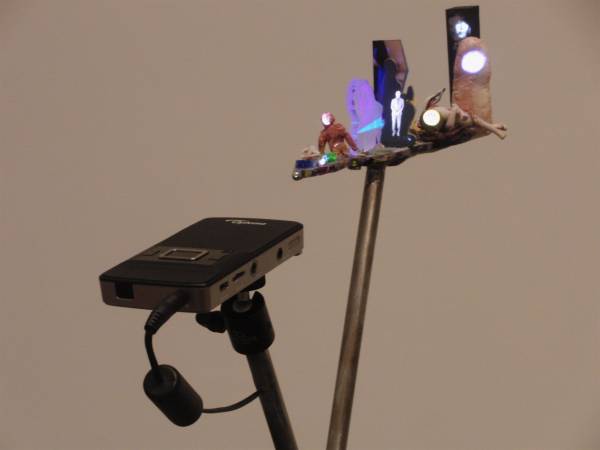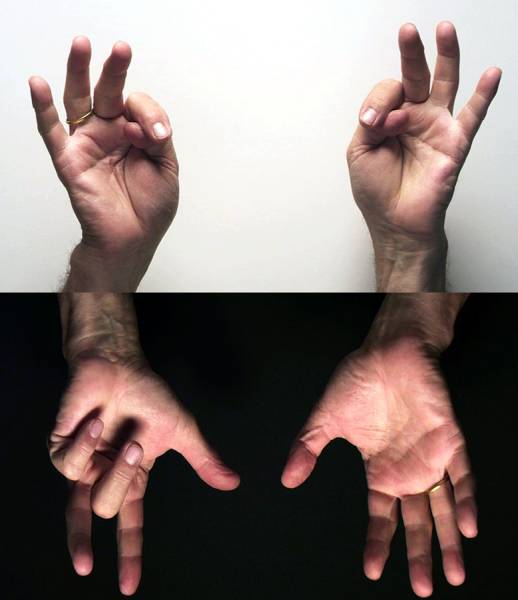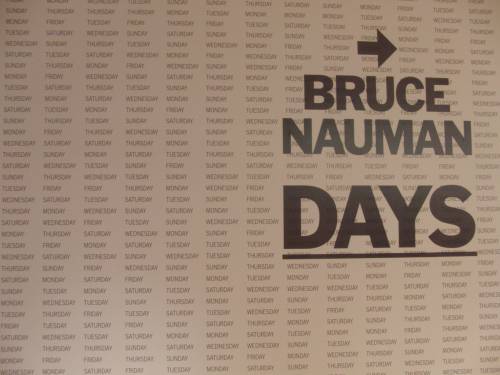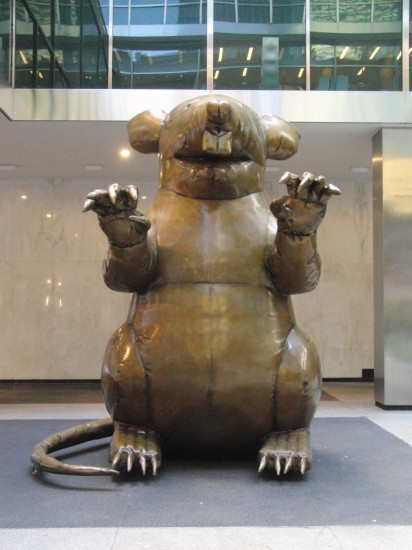
Bronze rat watches over Bruce High Quality Foundation installation in Lever House (photo by twi-ny/mdr)
Lever House
390 Park Ave. at 54th St.
Through October 1
Admission: free
www.leverhouseartcollection.com
When we were photographing the latest display in the Lever House lobby a few days before the official opening, a young man in a suit, seemingly on his way to lunch, stopped us and asked, “What is this?” When we told him it was an art installation by the Bruce High Quality Foundation, he just looked blankly around and said, “Is it finished?” We said that we thought it was probably pretty close to completion, if not done yet, and he sneered. “What the hell! I gotta walk through this every day?” And he stormed off, shaking his head. An arts collaborative formed eight years ago and named for a fictional character, Bruce High Quality, who supposedly died in the September 11 terrorist attacks, BHQF creates multimedia installations and performances that comment on the state of art, politics, and the world. Indeed, “Art History with Labor” at first appears unfinished, with working materials all around the lobby, including a bucket with a mop, a wheelbarrow with a bag of soil, a floor polisher, a ladder, a trash can, and other elements that make it look like a construction site. Meanwhile, outside in the plaza, a giant rat faces the gallery, growling, but instead of his being another blow-up Scabby the Rat seen at so many city construction sites that employ nonunion workers, this twelve-foot-high bronze casting is called “The New Colossus,” directly evoking the 1883 Emma Lazarus poem that is on a plaque within the Statue of Liberty (“‘Give me your tired, your poor, your huddled masses yearning to breathe free’”).
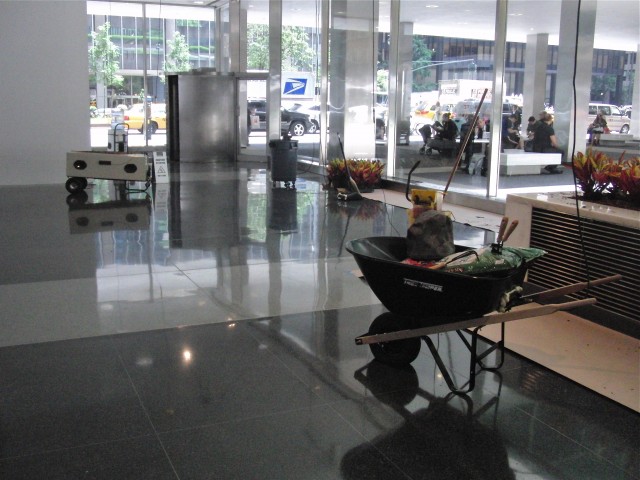
The Bruce High Quality Foundation reimagines Martin Luther’s 95 Theses for the modern age (photo by twi-ny/mdr)
But everything is part of the exhibition, along with a lone briefcase, an old watercooler, and a knocked-over filing cabinet spilling out printouts of “Art History with Labor: 95 Theses.” Free for the taking, the stapled-together four pages mimic Martin Luther’s 1517 document, a major force in the arrival of the Protestant Reformation, with quotes from Luther as well as Jean-Luc Godard, Roland Barthes, Andy Warhol, Bruce Nauman, Oscar Wilde, Jean-Paul Sartre, Jamie Dimon, Thomas Edison, and Sun Tzu in addition to facts about Ayn Rand, the Art Workers Guild, Auschwitz, Nikola Tesla, Paul Robeson, Iwo Jima, and the Lever Brothers, who built the company town Port Sunlight in 1888 for the men and women working in their soap factory. Each object in the lobby is equipped with a speaker pronouncing the theses, accompanied by a video, examining the nature of art and labor and how they have intertwined through the ages. The exhibit also includes “Double Iwo Jima,” a two-panel painting that raises questions about art, truth, propaganda, and labor by re-creating multiple images of Joe Rosenthal’s Pulitzer Prize-winning photograph. So, is the installation actually finished? One could argue that it’s only a start to further investigation on the part of the visitor. You can find out more about the Bruce High Quality Foundation and their unaccredited art university (a self-described “‘fuck you’ to the hegemony of critical solemnity and market-mediocre despair”) on Sunday, September 9, when they host an open house at their headquarters at 34 Ave. A, and there will be a closing reception for “Art History with Labor” at Lever House on October 1.
